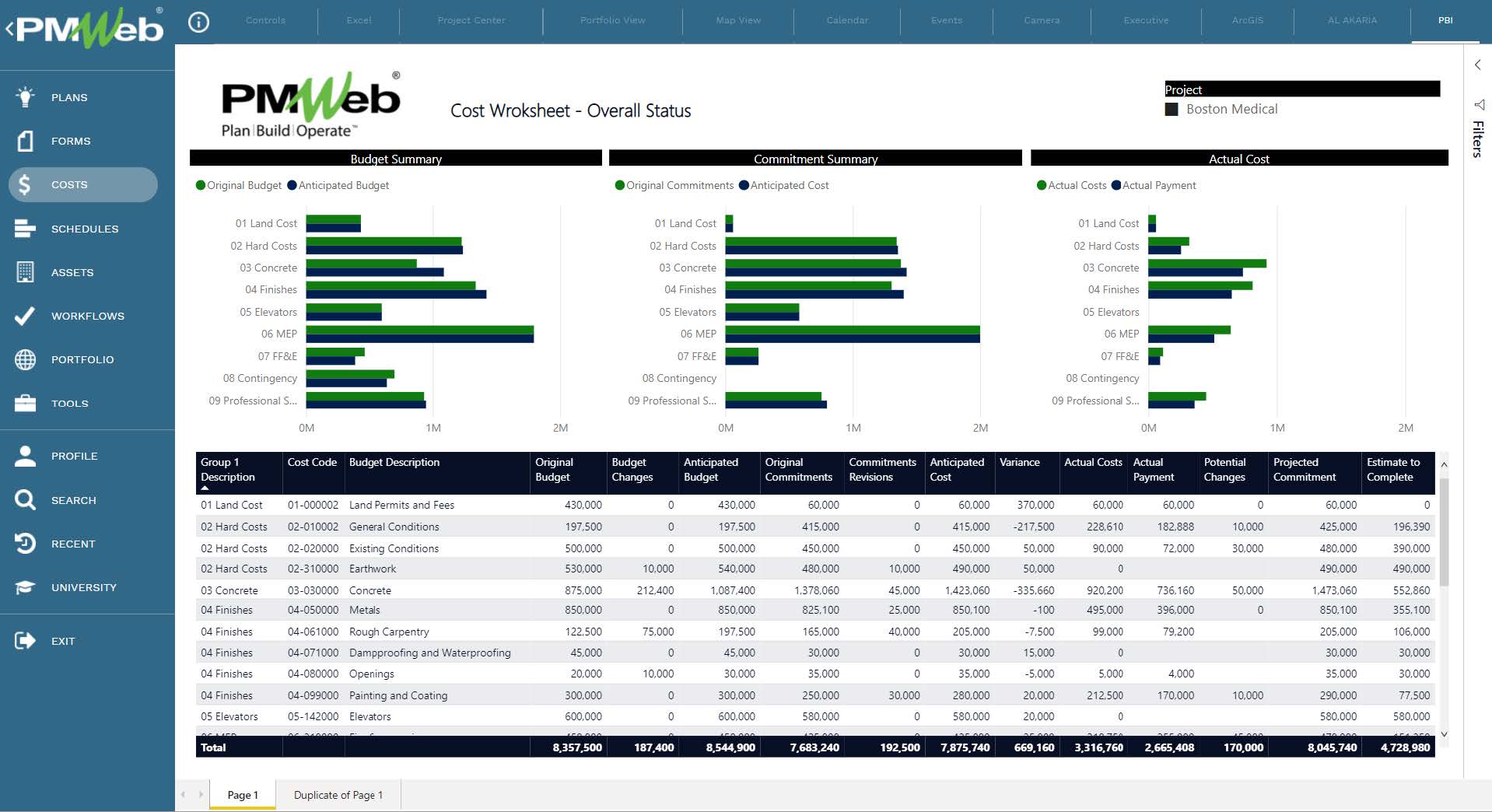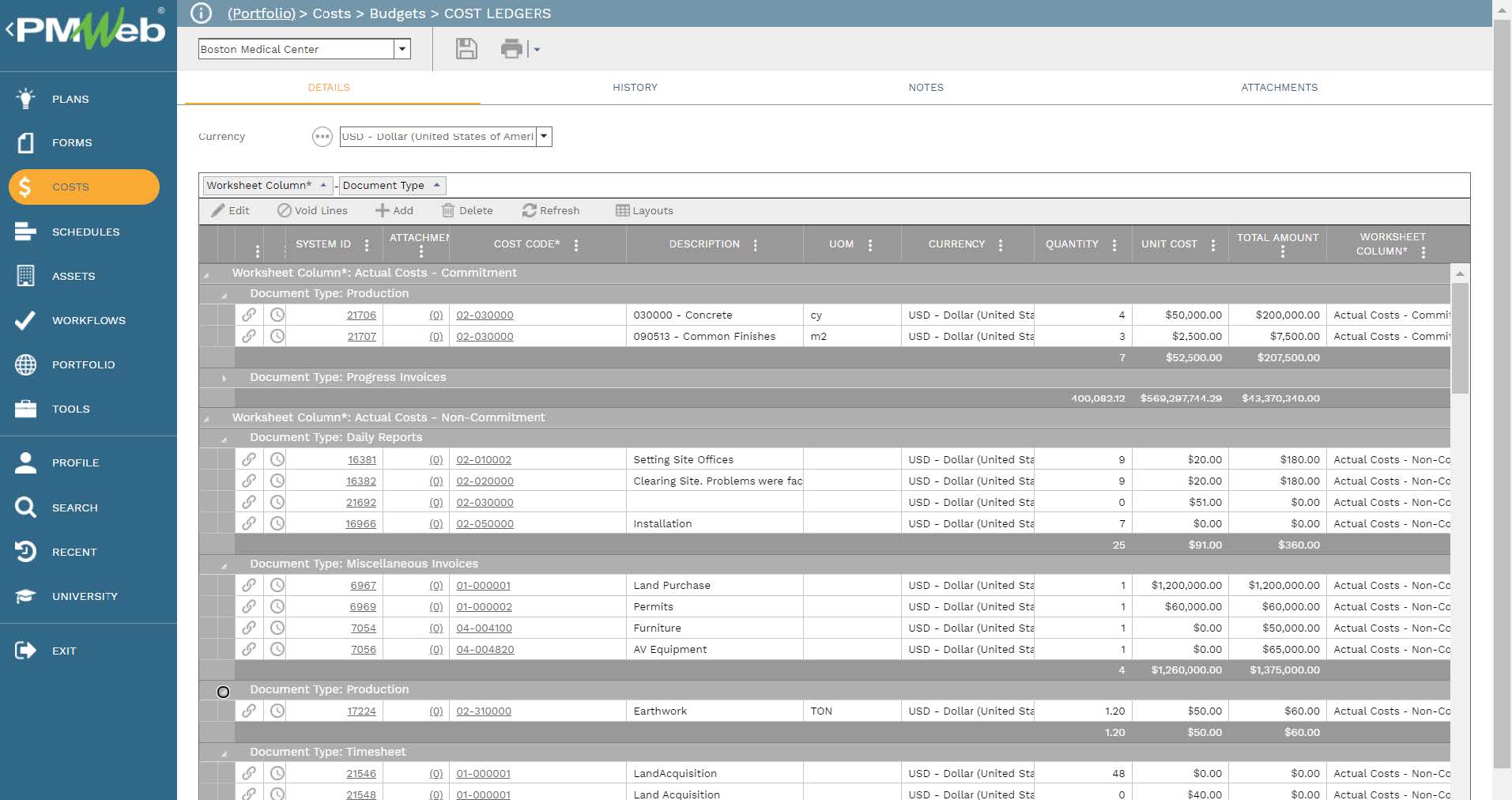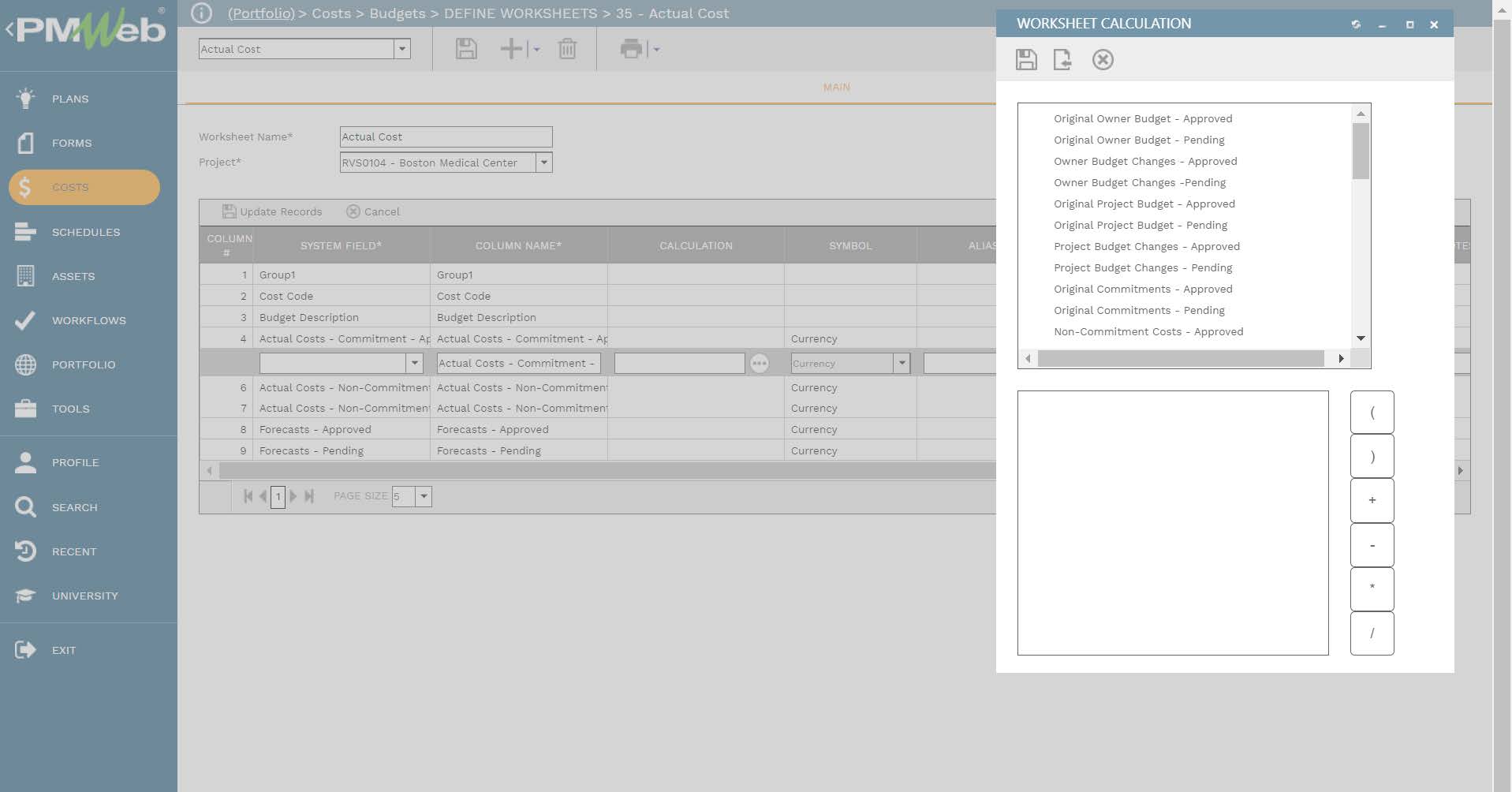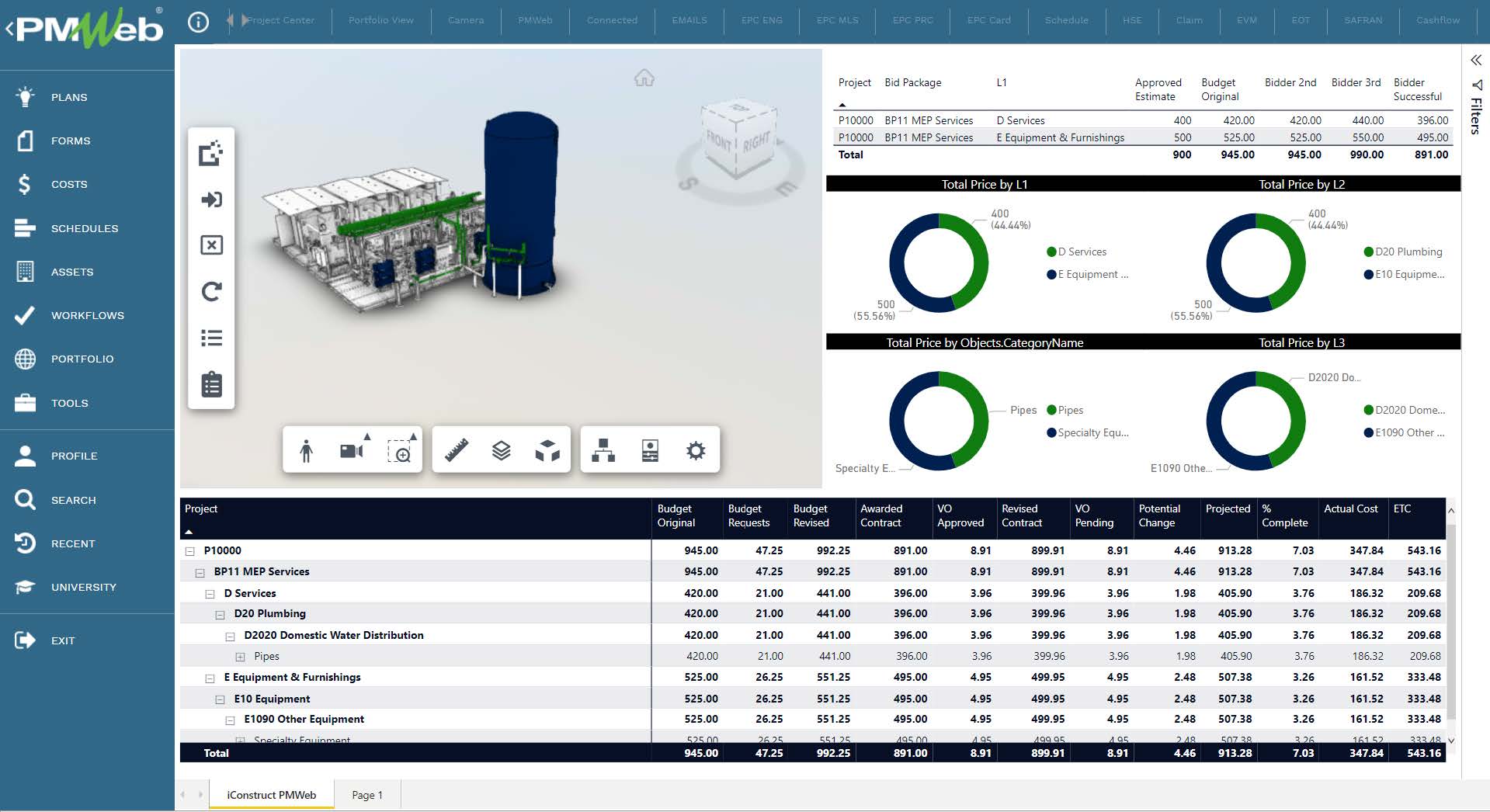All the cost data generated from the various PMWeb cost management processes is automatically captured in a single repository known as the PMWeb Cost Ledger. This data is the basis for the connected cost reporting using the Cost Worksheet module which create consolidated financial reports to display the project’s real-time financial status.

The cost worksheet uses the values of the different cost management processes and have the option to create Alias columns with calculated fields. The cost worksheet can limit displayed cost data of approved records, pending approval records, or both. The cost worksheet can group and summarize the displayed cost data by the cost breakdown structure (CBS) levels.

A key advantage of using the PMWeb cost worksheet module is that, unlike other PMIS solutions where a project can only have a single cost worksheet, PMWeb allows the creation of an unlimited number of cost worksheets. The Define Cost Worksheet module develops new cost worksheet layouts by selecting the required data field columns to be displayed and creating and displaying alias data field columns by adding formulas between the cost data fields.

In addition, with the growing use of Building Information Modelling (BIM), the recipients of the financial performance reports can now have better visualization of the scope of work being reported on. This can easily be achieved when the project cost data is associated with the objects included in the BIM model. These BIM objects become the basis for quantifying the SoW and then creating the cost estimate record in PMWeb. In turn, the approved cost estimate helps generate the project’s performance budget and online bid packages for which contracts are awarded, changes managed and payment for approved invoices made.

Reference
The content of this article was extracted from the book titled “Let’s Transform: Enabling Digital Transformation of Capital Construction Projects Using the PMWeb Project Management Information System – 2nd Edition” written by Bassam Samman.
The book provides project owners with oversight on how technology available today can support their efforts to digitally transform the management of their projects’ portfolios. For each capital project life cycle stage, PMWeb is used to detail how the relevant project management business processes can be digitalized to enforce transparency and accountability in delivering projects. In addition, MS Power BI was used to show how the real-time, trustworthy data captured in PMWeb can be aggregated, modeled, monitored, evaluated, analyzed, and reported at anytime, anywhere using any device.



